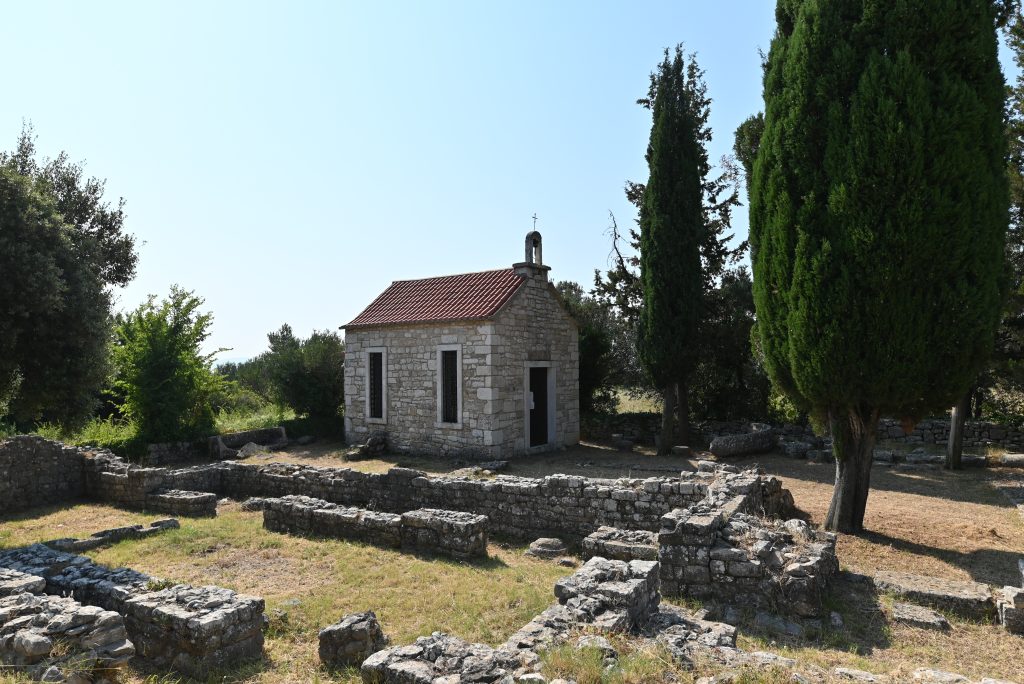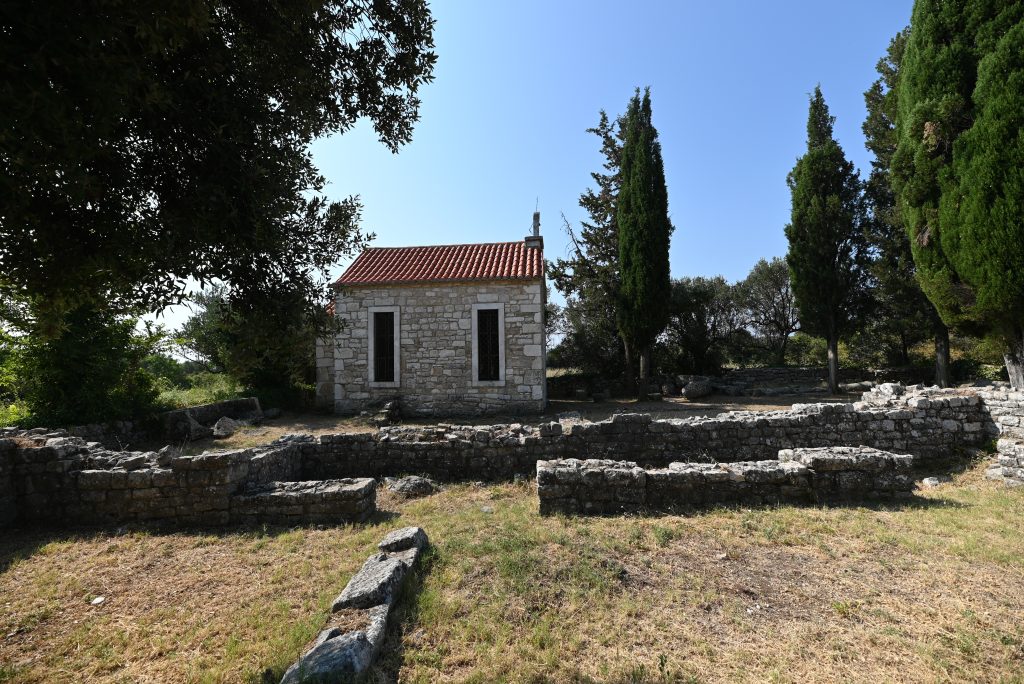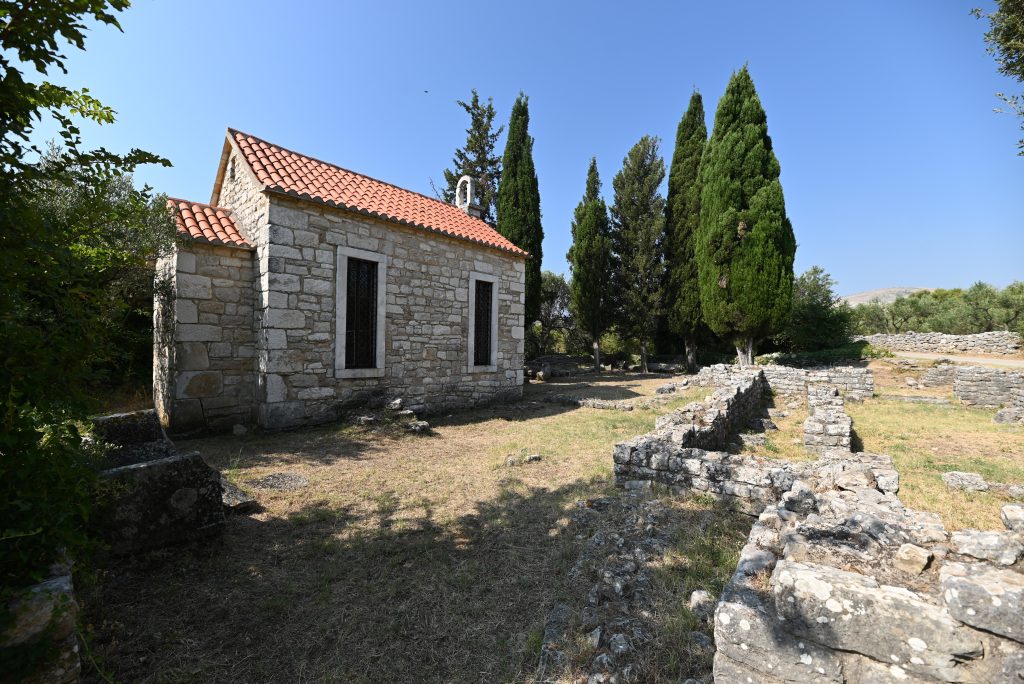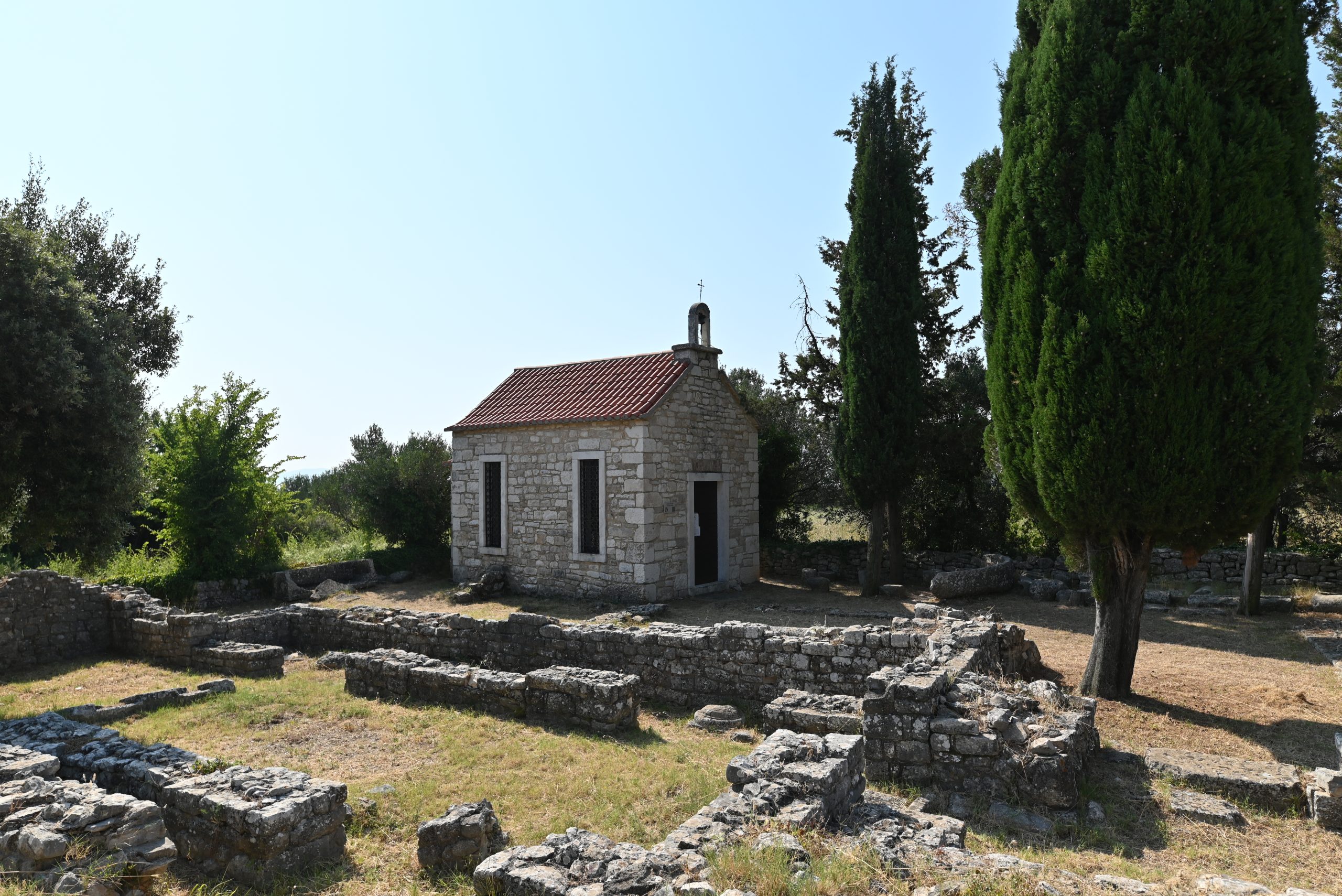
The Church of St. Martha in Bijaći, located on the western edge of the Kaštela Plain at the Stombrate site, is among the most important national archaeological sites.
The church and the archaeological remains surrounding it form a complex which dates back to the 1st century when a group of agricultural buildings from a larger Roman villa rustica were built within the lands of the colony of Salona. The villa was renovated in late antiquity, during which a part of the villa was transformed into an early Christian church. The development phases of this church span from the 5th to the early 7th century, as evidenced by fragments of stone church furniture discovered at the site. An octagonal baptistery was also built alongside the church.
After the arrival of the Croats following the fall of Salona in the mid-7th century, the complex of the rustic villa gradually became the center of one of the estates of Croatian dukes. This large estate stretched all the way to the coast, including the area of Divulje with the Church of St. Vital. During this time, the early Christian church was restored and dedicated to St. Martha. This dedication, inscribed on a stone ciborium from the first half of the 9th century, placed in the renovated baptistery during the reign of Duke Mislav (circa 835–845), along with a mention of the priest Gumpertus, serves as authentic evidence of a Frankish missionary post on the Croatian ruling estate. It marks the final phase of the Christianization of the Croats in their new homeland along the Adriatic, a process overseen by papal Rome with the active support of Charlemagne’s Frankish Empire.

In addition to the early Christian church, a cemetery with several sarcophagi was discovered, and in the early Middle Ages, a Croatian cemetery (9th-11th centuries) formed around the church, continuing through the Middle Ages until the 16th century. A smaller Croatian cemetery from the 9th-10th centuries was also discovered and excavated northwest of the church in close proximity.


Numerous fragments of pre-Romanesque church furnishings were placed in the early Christian church and partly in the baptistery, dating back to the 9th and 10th centuries. Of particular significance is the discovery of a small fragment with an inscription mentioning a župan (a Croatian noble), whose name is not preserved, and a ruler of the Croats, whose name is also lost. This inscription, carved at the end of the 8th century on the architrave of the altar screen from the 7th century, is the oldest known reference to the Croatian name after their migration.
At the end of the early Middle Ages, in the 11th century, the church was radically rebuilt over the remains of the early Christian one, and in 1197, a Romanesque bell tower was added to the church’s façade. By this time, the large estate in Bijaći, following the arrival of the Hungarian Árpád dynasty to the Croatian throne, ceased to function as a unified whole. A medieval village of Bijaći developed around the church, while the coastal area around Divulje was taken over by the Trogir commune. The medieval Church of St. Martha from the 11th and 12th centuries was damaged during Turkish raids, and a smaller church was built over the remains of the baptistery in the 17th century.


Leave a Reply